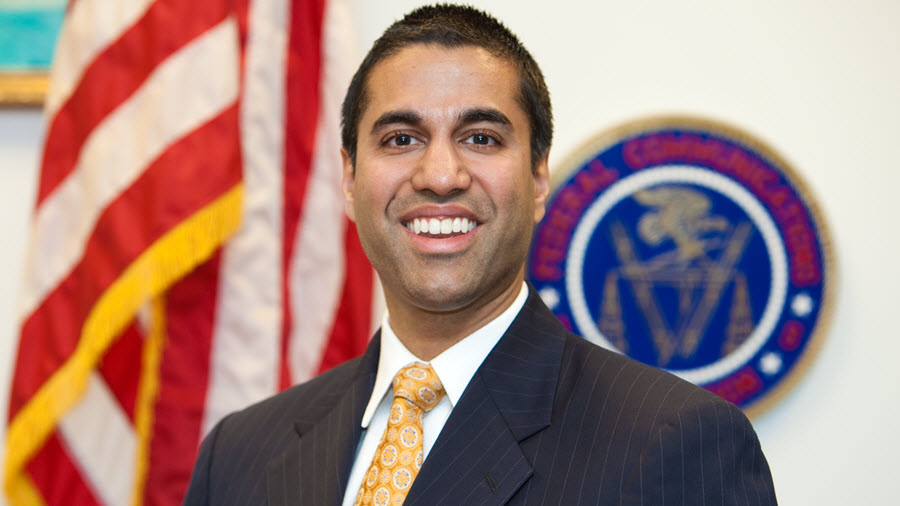FCC’s Pai Opens Review of 39% Cap, UHF Discount

FCC chair Ajit Pai has scheduled a December vote on his promised review of the 39% national TV station audience reach cap and UHF discount, broadcast ownership regulations that determine how many TV stations one owner can have.
The chairman circulated a proposal to that effect to the other commissioners Tuesday (Nov.21), according to FCC sources.
Pai and his fellow Republicans voted last April to reinstate the discount, which means UHF TV station owners only have to count half those stations' audience toward the 39% cap.
One of the reasons the chairman said he was restoring the discount, eliminated by his Democratic predecessor, was to consider it in tandem with the cap. Pai had said in dissenting from that vote that the two were essentially joined at the hip and needed to be considered, or reconsidered, at the same time.
Related: FCC Defends UHF Decision in Court
According to an FCC official speaking on background, the audience reach cap/UHF discount Notice of Proposed Rulemaking (NPRM) draws no tentative conclusions, but instead seeks a lot of input on various issues and possible actions.
Those include whether the FCC has the legal authority to adjust or eliminate the cap, including the discount, and if it does have the authority whether it should adjust or eliminate the cap given the current state of the marketplace.
It asks about the impact on localism of raising or eliminating the cap.
If the FCC does keep the cap, it asks, what should that percentage be.
Some have suggested, including Pai, that if the cap remains and the UHF discount is eliminated, the FCC should consider adopting a VHF discount given the change in relative fortunes of V's and U's.
The NPRM also asks whether the FCC should look at other metrics for a cap, say ratings rather than audience reach, for example.
If the FCC decides to retain, but adjust the cap so any company would be rendered out of compliance, should there be grandfathering and should that grandfathering convey when a station is sold.
Though the FCC's earlier vote, under Democratic Chairman Tom Wheeler, to repeal the discount did grandfather existing groups that would have exceeded the cap, it did not allow those to be sold with the grandfathered percentage intact.
The FCC is expected to give commenters 30-60 days to weigh in, so don't look for a decision before the first quarter of 2018.
The UHF discount dates from the analog TV days when UHF's were the inferior signals--Boomers well remember trying to dial in UHF stations with a narrow window on either side between wavy pictures and fuzzy sound. Now UHF's are the gold standard for digital and V's, not so much.
"Today’s proposal from FCC leadership asks to either eliminate or modify the existing national media ownership cap," said FCC commissioner Jessica Rosenworcel. "On this subject, Congress has made it clear that the FCC is not permitted to change or evade the cap, which statutorily prohibits a single broadcaster from acquiring stations that reach more than 39% of the national television audience. In fact, just yesterday, Congressional leaders warned the FCC not to use its regulatory authority to ignore the law. The FCC proposal asks what authority the Commission has to eliminate or modify the ownership cap and the answer is simple: there is none. This proposal is a giveaway to the largest station group at the expense of diversity, localism, and competition."
The smarter way to stay on top of broadcasting and cable industry. Sign up below
Contributing editor John Eggerton has been an editor and/or writer on media regulation, legislation and policy for over four decades, including covering the FCC, FTC, Congress, the major media trade associations, and the federal courts. In addition to Multichannel News and Broadcasting + Cable, his work has appeared in Radio World, TV Technology, TV Fax, This Week in Consumer Electronics, Variety and the Encyclopedia Britannica.

